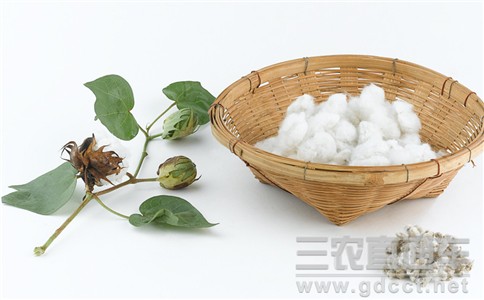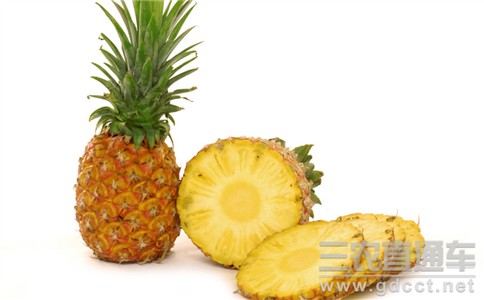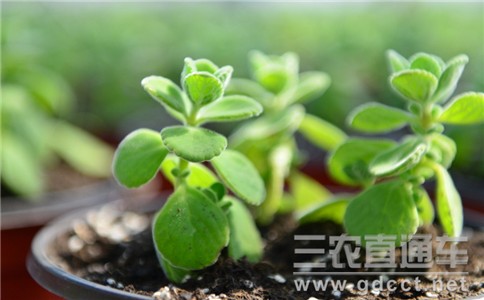The Ministry of Agriculture explores the cotton production model in the Yangtze River Basin
Due to the growth of cotton consumption in the Yangtze River basin, the purchase and export of local cotton showed a downward trend. However, the benefit of cotton production in this region is higher than the national average level, and the development of cotton production conditions is favorable. In addition, the Yangtze River Basin is also an important textile industry base in China, and the development of cotton production can provide sufficient raw materials for the textile industry.

The Yangtze River Basin is one of the three high-quality cotton areas in China, but the mechanization rate of cotton production is only about 20%. Coupled with the shortage of rural labor force, cotton production in the Yangtze River Basin is very difficult. In order to speed up the improvement of the level of cotton production mechanization, the Ministry of Agriculture has made great efforts to implement the "National Cotton production Mechanization Technology demonstration Project" in Zhijiang City, Hubei Province and other places to comprehensively explore the cotton mechanization production mode in the Yangtze River Basin of our country.
The climate of the Yangtze River basin is humid and rainy, and the planting area of cotton is small and scattered, which pose great challenges to the mechanization of cotton production. According to Liu Hongan, director of Zhijiang Agricultural Machinery Bureau, at the beginning of the project, Hubei agricultural machinery department organized experts to conduct many inspections and experiments, and finally selected Zhongnongmian 63 and Sumian 24 as the experimental varieties of the project. From May 24th to 25th, the mechanical rotary field was ploughed by shallow rotation for 3 times. Mechanical sowing was carried out on the first batch of demonstration fields on May 25 and on June 5 on the second batch of demonstration fields. In the process of mechanical cotton sowing, in strict accordance with the requirements of mechanical cotton picking, plant spacing 19cm, row spacing 76cm, ensure that the plant row spacing is consistent with the requirements of cotton picking machine, more than 4500 plants per mu, ensure the combination of agricultural machinery and agronomy, and create conditions for later mechanical harvesting.
In order to test the results of the implementation of the project in the past half year, in late November, the Agricultural Mechanization Department of the Ministry of Agriculture organized experts from relevant departments such as Hubei Provincial Bureau of Agricultural Machinery, Hubei Academy of Agricultural Sciences, * * Academy of Land Reclamation and other relevant departments to check and accept the project through on-site demonstration. In the on-site demonstration session, a John Deere knapsack single-row cotton harvester and a regular brand 4MZ-3 three-row cotton harvester demonstrated the cotton harvest operation. In less than half an hour, the field covered with snow-white cotton was bare. The acceptance team unanimously agreed that the project passed the acceptance. "through the integration of agricultural machinery and agronomy and the integration and application of mechanization technology in the whole process of cotton production, we can save cost and increase income by more than 300 yuan per mu." Liu Hongan, as one of the leaders of the project, said excitedly in the face of the acceptance results.
China's cotton mechanization production is mainly concentrated in the cotton area, while the cotton mechanization production in the Yangtze River Basin has just started and is still in the exploratory stage. Although the project has played a good exemplary role in the whole process of mechanized cotton production in the Yangtze River Basin, the problems and difficulties in the implementation of the project can not be ignored. On the same day of the demonstration meeting, the reporter saw at the scene that despite the high efficiency of machine cotton picking, there is a large gap between its harvest quality and manual labor. On the one hand, due to light rain and high air humidity at that time, the effect of machine cotton picking was affected, and there were still many cotton peaches left; on the other hand, due to the influence of technology, most of the mechanically picked cotton still needed to be harvested manually for the second time. Moreover, the impurity rate of cotton picked by machinery is high. A cotton farmer who visited the site told the reporter that manual cotton picking only removes cotton peaches, the cotton picked is very clean and complete, and will not damage the cotton fiber, while the cotton picked by machinery contains too many impurities and will tear off the cotton fiber, which will seriously affect the sale price of cotton. It can be seen that how to improve the quality of mechanized cotton picking is indeed one of the difficult problems to be solved in the whole process of mechanized cotton production.
In response to this problem, Zhou Liming, deputy director of the Hubei Provincial Bureau of Agricultural Machinery, said that the problem of impurity content in cotton picking by machine is unavoidable. How to minimize impurities as far as possible through machinery is one of the key issues in the next step of mechanization of cotton production. "to improve the quality of cotton harvested by machine, so that cotton can be sold at a good price is our wish, but also the wish of cotton farmers." It would be better if we could develop a cotton cleaning machine that follows the cotton picker. " Zhou Liming said.
The whole mechanization of cotton production focuses on the word "machinery", but the high price of cotton picking machine first hinders its popularization. At present, most of the cotton pickers used in China are imported from foreign countries, and the average price is more than 2 million yuan. This price is difficult for ordinary cotton farmers to bear, even cooperatives and enterprises do not dare to buy it easily without large-scale operations as a guarantee.
In addition to cotton pickers, mechanical selection and matching also affect the mechanized production of cotton in the Yangtze River Basin. For example, in the cotton mechanized sowing link, because the power wheel of the seeder and the sowing plate are in a straight line, the power wheel is compacted after sowing, resulting in a deep sowing ditch. In case of overcast and rainy weather, it will seriously affect the germination of seeds and the later growth of cotton. "it is very important to select the matching machinery suitable for cotton production in the Yangtze River basin, and it is necessary to improve the existing models if they do not meet the local cotton planting requirements. The research and promotion of supporting models is also the focus of our next work. " Zhou Liming said.
To improve the mechanization level of cotton production in the Yangtze River Basin is a systematic project, from cotton variety cultivation to field management to cotton harvest, all links need to be developed synchronously. Among them, we need the cooperation of government departments, scientific research institutions, agricultural machinery enterprises and other relevant departments to give key support to the weak links of cotton production mechanization in the whole process of cotton production, so as to realize the whole process mechanization of cotton production in the Yangtze River Basin as soon as possible.
- Prev

Cultivation techniques for successful introduction of excellent pineapple varieties in Hainan
Cultivation techniques for successful introduction of excellent pineapple varieties in Hainan
- Next

Zhongguancun Quantum Biological Agricultural Innovation Alliance Established in Beijing
Zhongguancun Quantum Biological Agricultural Innovation Alliance Established in Beijing
Related
- A course of planting techniques and methods on how to grow carrots
- How to plant the latest tulips?
- Is it better to pick tea in the morning or in the afternoon? When is the best time for tea to be picked? what is the third or fifth tea?
- Launch Yuanxiao Happy combination Haocha + Tea Yuan healthy Taste
- Penghu Tourism "Fireworks 20 Parade with You"
- 2022 West Lake Happiness holds "Digital Revitalization Voucher" and draws iphone13 and laptop.
- Banqiao Fuzhou social houses are designed to change start-up combined with police elimination to create a safe and livable environment
- The convenient measure of "mechanical weeding" in Xinbei has been abused and the Agriculture Bureau has imposed heavy penalties on the illegal land consolidation.
- Changgeng University Joins Hands with Four Memory Factories to Rescue Memory Talent Shortage
- The list of Taiwan's top 100 MVP managers is listed by the Director-General of the Farmers' Association of Sanxia District.

